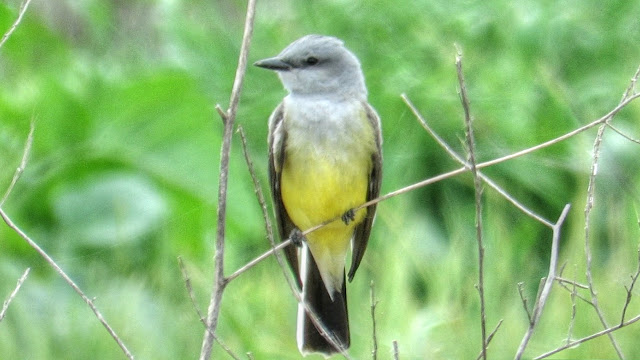Beautiful Western Kingbird on the lookout for flying insects. A large flycatcher similar to the Great Crested Flycatcher of the Backyard in size and appearance, but without the crest. Filmed at the Merced National Wildlife Refuge, California in April, 2017.
The western kingbird (Tyrannus verticalis) is a large tyrant flycatcher.
Adults are grey-olive on the upperparts with a grey head and a dark line through the eyes; the underparts are light becoming light orange-yellow on the lower breast and belly. They have a long black tail with white outer feathers. Western kingbirds also have a reddish crown that they only display during courtship and confrontations with other species. The Western Kingbird is very similar to and easily confused with Cassin's kingbird, Couch's kingbird and the tropical kingbird, all of which overlap the western kingbird's range to some extent. The western, however, is generally lighter in coloration and can be distinguished from these species by the black squared tail with white outer webs, as well as voice.
Their breeding habitat is open areas in western North America. The increase in trees throughout the Great Plains during the past century due to fire suppression and tree planting facilitated the range expansion of the western kingbird as well as range expansions of many other species of birds. Kingbirds make a sturdy cup nest in a tree or shrub, sometimes on top of a pole or other man-made structure. Three to five eggs are laid and incubated for 12 to 14 days.
The name kingbird is derived from their "take-charge" behavior. These birds aggressively defend their territory, even against much larger birds such as hawks.
These birds migrate in flocks to Florida and the Pacific coast of southern Mexico and Central America.
They wait on an open perch and fly out to catch insects in flight, sometimes hovering and then dropping to catch food on the ground. They also eat berries.
The song is a squeaky chatter, sometimes compared to a squeaky toy. The call is a sharp loud whit. It occasionally sings before sunrise.
New HD videos uploaded frequently. Subscribe at:

No comments:
Post a Comment